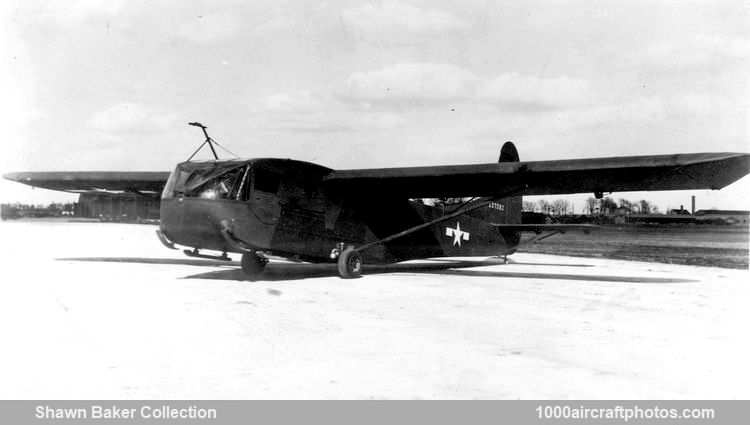10/31/2023. Remarks by Johan Visschedijk: "The XCG-15 was originally built by the Waco Aircraft Company as a model NZR troop glider for the USAAF, designated CG-4A, serialed 43-37082. It was selected for development as the Waco model NEU and designated XCG-15 by the USAAF.
Modifications included reduced wing span from 83 ft 8 in (25.50 m) to 62 ft 2 in (18.95 m), elimination of the wing spoilers, an improved cantilever undercarriage, a revised nose shape, and a number of internal changes including standard USAAF tie-down fittings and floor spacing. Ordered on October 14, 1943, flight tests began in February 1944 at the US Aircraft Section, Air Materiel Command, Freeman Field, Seymour, Indiana. Although the XCG-15 gross weight had increased from 7,500 lb (3,402 kg) to 8,000 lb (3,629 kg), the towing speed increased from 150 mph (240 kmh) to 180 mph (290 kmh).
Flight tests of the XCG-15 were so successful Waco received an order for two XCG-15A prototypes (serialed 44-90987 and 44-90988) in May 1944, the first was flown on October 25, 1944. However, a month earlier, September 21, the USAAF ordered 875 CG-15As (serialed 45-5276 to 45-5660; 45-12743 to 45-13232). Production was terminated at the end of WW II, by that time Waco had delivered 427 CG-15As. The first 385 were fifteen-seaters, the remaining 42 were sixteen-seaters. Canada acquired a single example for evaluation purposes. The CG-15As saw limited service alongside the CG-4As.
One XCG-15A was converted in 1945 to the XPG-3 (44-90986), with two Jacobs R-755-9 radial engines, for use as a low-cost troop or cargo transport which could also be towed as a glider. Fuel was carried for three hours duration.
In June 1948, the Air Force discarded the CG, PG and TG designations in favor of a simple G category. The CG-15 became the G-15A and the XPG-3 became the G-3."
